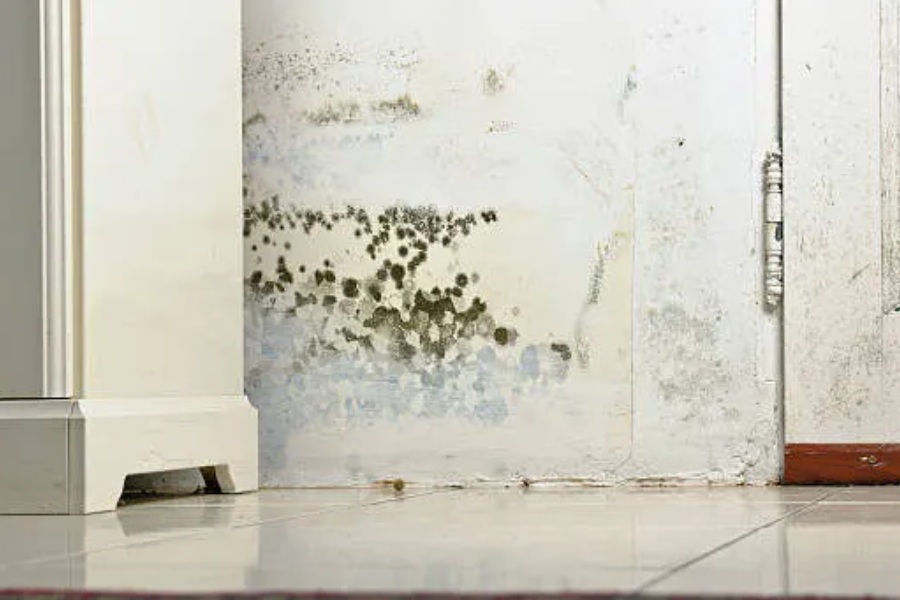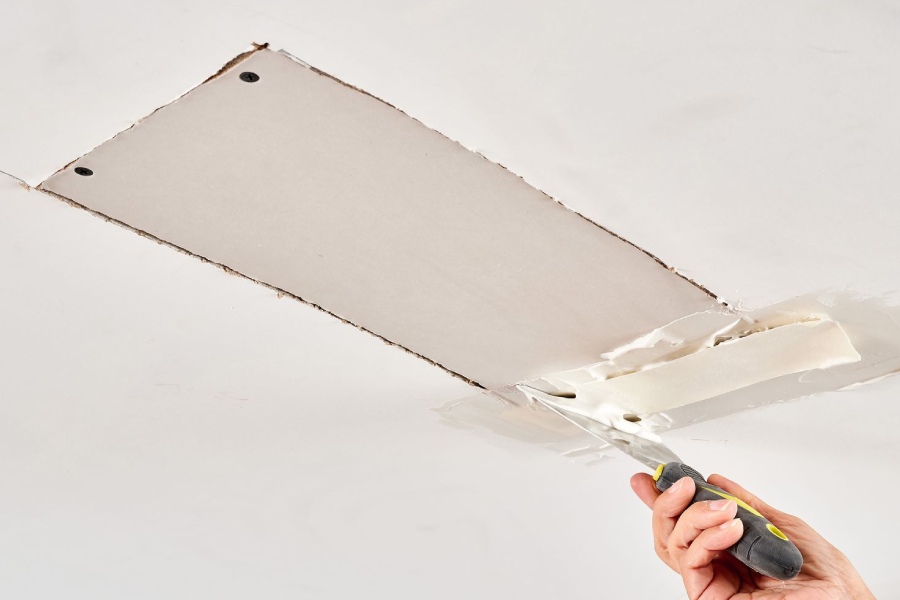Discovering mold on your drywall can be a nightmare. The unsightly patches and musty odor are often just the tip of the iceberg, hinting at potential health hazards and structural issues lurking. As you stand there, staring at the offending wall, many questions race through your mind. How extensive is the problem? Should I replace moldy drywall?
In this article, we will discuss whether you should replace moldy drywall. We will also discuss the signs of mold, how to assess damage, and the steps for replacing drywall, along with preventive measures to keep your home mold-free.
Let’s start!

Should I Replace Moldy Drywall?
Mold on drywall might pose health risks, especially in damp environments like basements and bathrooms. High humidity, water leaks, and poor ventilation commonly contribute to mold growth.
As mold develops, it might trigger allergic reactions and respiratory issues, particularly for vulnerable individuals, making it essential to address the problem promptly. While small mold patches may be cleanable, larger or deeply affected areas often require drywall replacement.
We recommend consulting with our professionals, who can assess the extent of the mold damage. In many cases, replacing the drywall is more cost-effective than facing the long-term health issues associated with mold exposure.
To effectively replace moldy drywall, we advise starting by removing the affected areas and addressing any moisture problems that may have contributed to the growth. Installing mold-resistant materials can further safeguard your home against future infestations. Also, we encourage you to prevent mold from returning by fixing leaks, improving ventilation, and utilizing dehumidifiers.
Understanding Mold Growth on Drywall
Causes of mold on drywall
Leaks from pipes or roofs are significant contributors to mold growth, especially in environments with high humidity. When flooding occurs, it often exacerbates these issues, leading to further mold problems. In addition, poor ventilation traps moisture, creating an ideal breeding ground for mold spores.
Drywall, composed of organic materials, is particularly vulnerable in these conditions. Its porous nature allows it to absorb moisture easily, making it an excellent food source for mold. Once mold sets itself within the drywall, it can spread rapidly, worsening the situation and potentially causing extensive damage.
Signs of mold on drywall
Mold typically appears as dark spots, which can be black, green, or brown. This discoloration often starts small and gradually expands over time.
So, be sure to look for patterns or clusters of spots, particularly around corners and baseboards. Additionally, mold often has a distinctive musty and earthy odor, which becomes more noticeable in humid areas of your home.
If you detect persistent or unusual smells, don’t ignore them; they may indicate a hidden mold problem. Always investigate these odors, as they can serve as your first clue to a developing mold issue that requires immediate attention.
Health Risks of Moldy Drywall
As mentioned, mold exposure might pose significant health risks, leading to allergic reactions, respiratory issues, and skin irritation. Prolonged exposure might exacerbate these problems, potentially resulting in chronic health conditions. Certain groups, including children, the elderly, pregnant women, and individuals with pre-existing health issues, might be particularly vulnerable to these effects.
The symptoms of mold exposure are diverse and might manifest in various ways. You may experience sneezing, a runny nose, coughing, headaches, fatigue, and skin rashes. For those with weakened immune systems, severe symptoms may necessitate medical attention.
Recognizing these symptoms early is essential for potentially reducing health risks. Taking prompt action is also crucial for protecting vulnerable populations.
Assessing the Extent of Mold Damage
Assessing the extent of mold damage is a critical first step in addressing mold-related issues. A visual inspection involves identifying visible mold and evaluating the extent of its coverage in affected areas.
It is also important to check surrounding spaces for any signs of mold spread, as this can indicate a larger problem. For a more comprehensive assessment, enlisting the expertise of professionals like our team at Mold Remediation Atlanta can offer substantial advantages.
We utilize advanced techniques such as moisture meters and infrared cameras to detect hidden mold and moisture issues, ensuring a comprehensive situation evaluation. This combination of visual inspection and professional assessment is essential for effectively managing mold damage and preventing further complications.
When to Replace Moldy Drywall
Determining when to replace moldy drywall is essential for maintaining a safe and healthy living environment. The severity of the mold infestation plays a significant role in this decision.
Light surface mold can often be effectively cleaned and remediated without the need for replacement. However, if the mold has penetrated deeply into the drywall or covers a large area, replacement is typically necessary to prevent further health risks.
In addition to the extent of the mold, it’s crucial to assess the drywall’s structural integrity. Signs such as sagging, crumbling, or moisture damage indicate that the drywall may no longer be stable or safe for use. In these cases, prompt replacement is imperative to ensure the occupants’ safety and protect the structure’s integrity.
How to Replace Moldy Drywall
Replacing moldy drywall involves several critical steps to ensure safety and effectiveness. First, preparation is key; begin by taking necessary safety precautions, such as wearing personal protective equipment and setting up containment to prevent mold spores from spreading. Also, remove furniture and items from the affected area to create a clear workspace.
Once the area is prepared, proceed to remove the moldy drywall. Carefully cut out the affected sections, ensuring you eliminate all mold-infested material. Proper disposal of these moldy materials is essential to prevent potential health risks.
After the old drywall is removed, it’s crucial to treat the underlying cause of the mold. Identify and fix the source of moisture, as this is often the root of the problem. Ensure that the area is completely dry before installing new drywall.
Finally, when the space is ready, measure and cut new drywall panels to fit the openings. Secure the new drywall in place and finish it appropriately to create a seamless appearance.

Conclusion
Addressing moldy drywall is essential for maintaining a safe and healthy living environment. So, should I replace moldy drywall, or can it be cleaned and salvaged?
While minor mold infestations can sometimes be cleaned, larger or deeply affected areas typically require replacement to avoid health risks. Assessing the mold’s severity and the drywall’s structural integrity is key in making this decision.
If you encounter mold, it’s important to identify and address any moisture sources promptly. At Mold Remediation Atlanta, we specialize in thorough mold assessments and remediation to ensure your home is safe and mold-free. We can help you protect your home from future infestations and create a healthier living space for your family!


